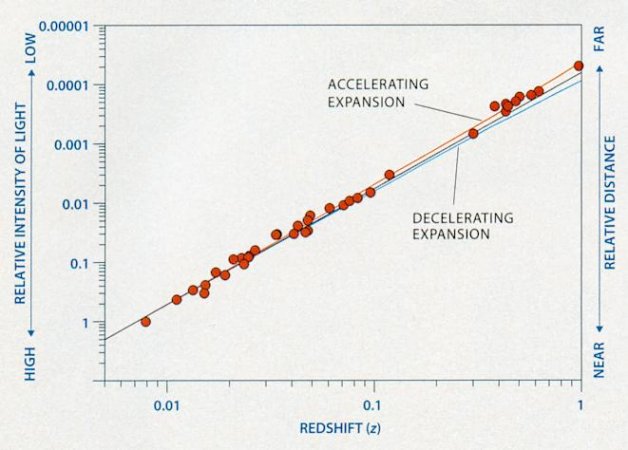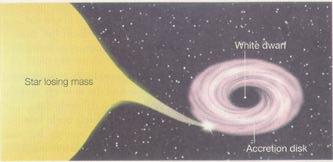 |
Measurements from high-redshift supernovae are found to be about 20 per cent fainter than expected. Most astronomers interpret this as evidence for accelerating expansion of the Universe caused by an unknown "dark energy". Figure 03 the supernova observations (red dots) deviate slightly but significantly from the pattern for a deceleration expansion (blue line) that should occur if the universe is flat and has no cosmological constant. The measurements suggest that expansion is accelerating, perhaps because of a nonzero cosmological constant (red line).
|




